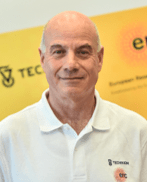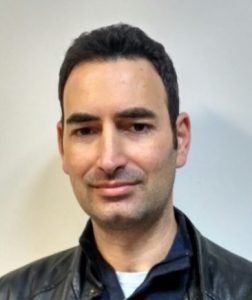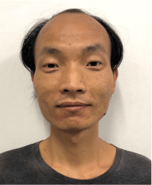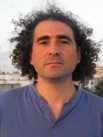Let There Be Entangled Light
The research group of Prof. David Gershoni succeed in generating clusters of entangled photons, an ability essential for future quantum technologies
Quantum computers able to perform complicated lightning-speed computations and quantum communication that can transfer quantum information across the world without it getting lost or being eavesdropped on, are hot buzzwords of our imagined future. Scientists from the Department of Physics and the Solid State Institute at the Technion – Israeli Institute of Technology bring that future one step closer to fruition. In a recent breakthrough, Doctors Dan Cogan, Zu-En Su, and Oded Kenneth, and Professor David Gershoni have demonstrated a deterministic way to generate chains of entangled and identical photons clusters.
When particles are entangled, they form a unified “system:” the state of each particle inside the group cannot be described independently of the others. Therefore, acquiring information about one particle in the group would give us information about the others. And if one particle is affected, for example by measurement, the others, even on opposite edges of the universe, would also be affected. This property of the entangled particles is the key to the advantages promised by quantum technology.
Photons are of particular interest for communication technologies in general and quantum communication in particular, thanks to light’s non-interactive nature. Photons normally don’t interact with matter around them, and therefore don’t “disappear.” This property makes light very useful for communication, for example, via optical fibers.
Likewise, photons do not interact with each other, which makes it harder to generate entangled photons. The challenge of generating photon entanglement has been the focus of Prof. Gershoni’s studies for many years. In 1999, his group proved that nanometric-size semiconductors called quantum dots, or “artificial atoms,” can be used as on-demand sources of single photons. In 2005, his group demonstrated the possibility of producing entangled photon pairs from these quantum dot sources, and in 2016, they demonstrated proof of concept generation of many entangled photons in a cluster state.
The group’s current study, published in Nature Photonics, presents a device that uses laser pulses to excite a single quantum dot. The device, also called “The Knitting Machine,” produces periodically 500 million single photons each second, where each photon in this continuous chain is entangled with the previous photon and the next one. The group has shown that every 10 consecutive photons in the chain are entangled.
The work presents the best source of entangled light demonstrated to date in terms of brightness, rate, and entanglement robustness. Equally important, the photons produced by the source are almost identical (indistinguishable). Identical photons can interfere constructively, thus providing a way to create entanglement connections between photons from different chains to scale up their cluster size and connectivity.
“We believe this breakthrough will advance the field of quantum information processing in general and quantum communication in particular. These fields will most likely form the basis of future quantum technologies. Our research motivation stems from our hope that technology will follow science and that soon, we will see wide use of genuine quantum technologies. In the near future, quantum information communication and entanglement distribution could become a feasible reality,” said Prof. Gershoni.
“Spooky action at a distance”
Quantum entanglement is a physical concept which emerges from the foundations of the theory of Quantum Mechanics, as amended during the 1920s by Niels Bohr, Erwin Schrödinger, and Werner Heisenberg. Quantum Mechanics, as opposed to classical mechanics, is nondeterministic and has probabilistic nature. Albert Einstein did not accept this description as complete, saying that “God does not play dice.” In an attempt to prove that Quantum Mechanics is an incomplete theory, he coauthored in 1935 a paper with Boris Podolsky and Nathan Rosen (the founding father of the Technion Physics Department) that became known as the EPR paradox (EPR stood for their initials). The paper expressed reservations about the notion of entanglement, which allegedly ‘allows’ for information to travel instantaneously – faster than the speed of light. Consequently, he expressed his disbelief in quantum entanglement by terming it “spooky action at a distance.”
Niels Bohr, one of the founders of Quantum Mechanics, argued with Einstein for many years. He allegedly said “Einstein, stop telling God what to do,” and referred to the remote nature of entanglement as an interaction not based on “mechanical impact,” but on the “logical effect,” on the conditions that define the behavior of the system. Einstein described Bohr’s response as “longwinded Talmudic gibberish.”
In 1962, Irish physicist John Bell suggested an experimental way to resolve the Einstein-Bohr debate. Bell proved that if the measured correlations between two particles violate a mathematical inequality, they must be entangled. His ideas were tested in research trials conducted during the 1970s, 1980s, and 1990s of the previous century by John F. Clauser, Allan Aspect, and Anton Zeilinger, the 2022 Nobel Prize laureates in Physics. The prize citation “for experiments with entangled photons, establishing the violation of Bell inequalities and pioneering quantum information science,” shows that Niels Bohr was right.
The current work of the group of Professor Gershoni provides the best way to-date, to produce entangled photons and use them as resources for quantum information processing.
In 2012 Prof. Gershoni received the Japanese ISCS Quantum Device Award, in 2014, he received the Michael Landau Prize for Art and Sciences for his seminal contributions to this research field and In 2021, he received a Research Award from the Alexander von Humboldt Foundation in Germany.






